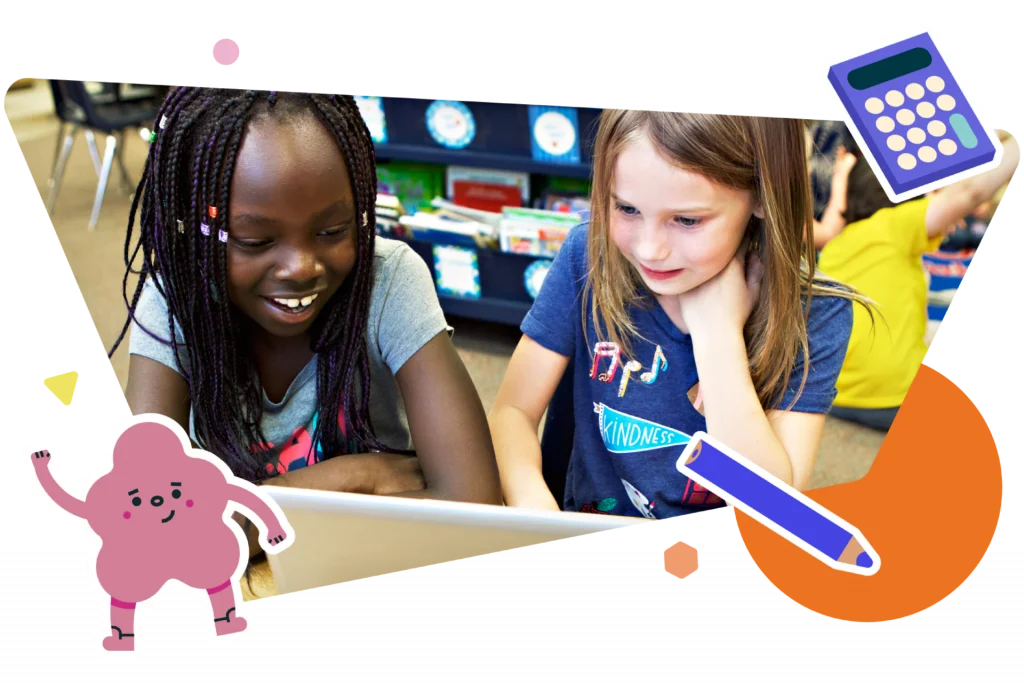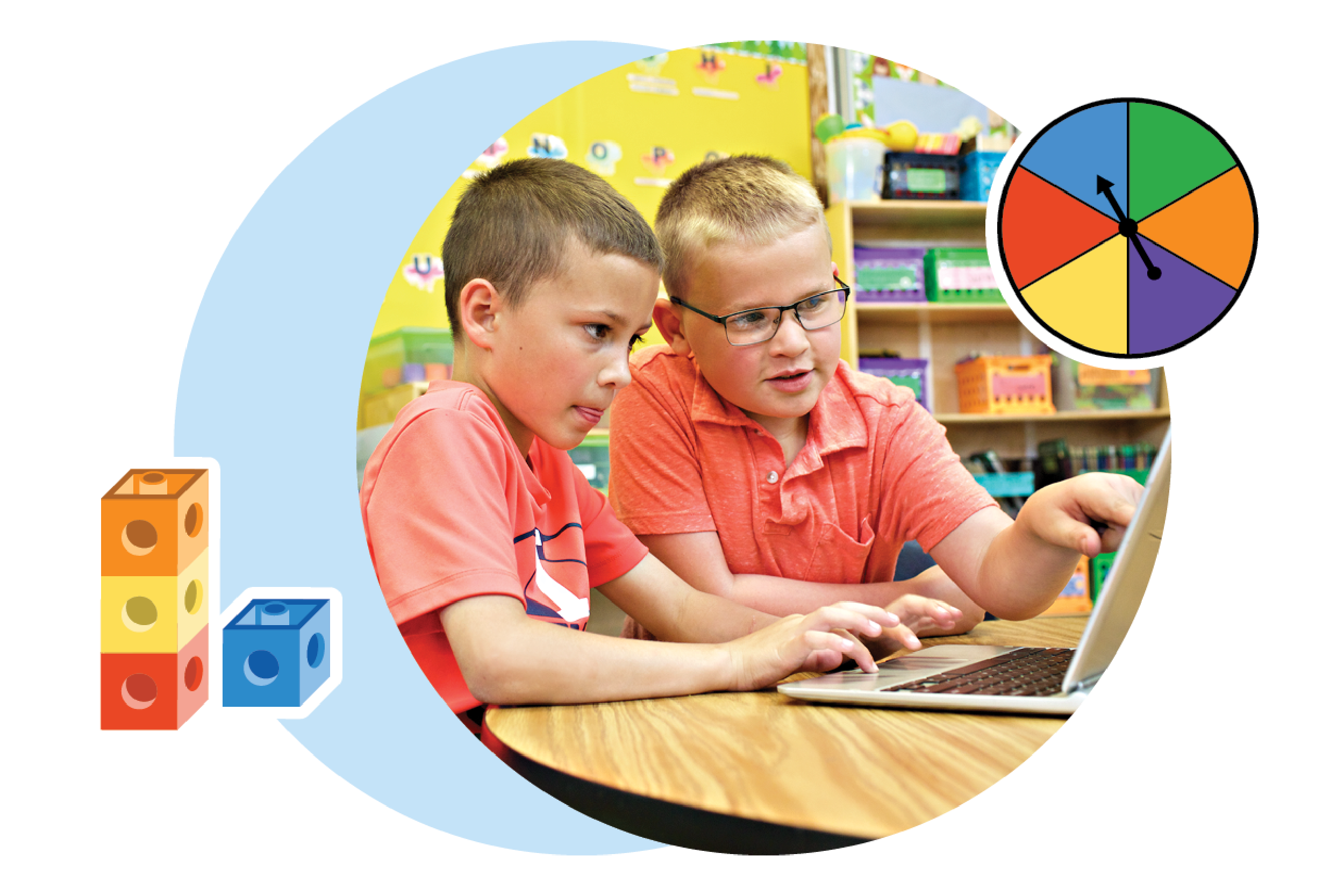
Want to shift your math teaching practices this year, but not sure where to start? That’s a good problem to have!
You can boost your instruction this fall with problem-based learning, technology in the math classroom, and more—all in ways that put 91制片厂 at the center.
“All 91制片厂 need the opportunity to feel like they can figure out mathematics,” says Jennifer Bay-Williams, Ph.D., an author and professor of mathematics education at University of Louisville. “That’s where they develop a math identity, [the idea] that they can do math. And they start feeling like, ‘I can figure this out.’”
Bay-Williams spoke at our , along with other thought leaders and expert educators. Keep reading to see how their key takeaways can help you shift your math instruction this school year!
Center student ideas in a collaborative math classroom
91制片厂 Math Suite Executive Director Kristin Gray had great tips for teachers looking to center student ideas in the classroom. Simply put, it’s all about helping them make several types of connections. These can include any of the following:
- Connecting 91制片厂’ classroom math experiences to real life
- Connecting math ideas to one another
- Connecting their ideas to the ideas of their classmates
How do teachers foster these important connections? That’s where come in. Rather than teaching a concept or formula in isolation, then having 91制片厂 practice it, try inviting 91制片厂 to collaborate on a real-life problem that will lead them to that math idea. (For example, you might ask them to work on designing a small traffic or subway system that requires developing ideas about distance, rate, and time.)
As a result, 91制片厂 build problem-solving skills collaboratively, feel their ideas are valued, develop their own ways to make math make sense, and learn from and with each other. Teachers also get to know and appreciate the different backgrounds and styles 91制片厂 bring to the classroom, opening up new opportunities for engagement—and connection.
Reimagine student engagement
No matter how engaging you are as a teacher, it’s typically 91制片厂 who drive engagement—and that’s actually good news. You don’t have to reinvent the wheel or do somersaults to get their attention. In fact, a lot of engagement comes from creating routine and familiar opportunities for connection. And it can also come from allowing 91制片厂 to make mistakes.
“We want all 91制片厂 to have an entry point into [math] tasks,” notes 91制片厂 STEM Product Specialist James Oliver. “Those 91制片厂 that seem to always feel like they don’t fit or don’t have the identity in that math classroom, we want them to immediately have successes and have their curiosities tested.” Successes—and productive failures. “What we’ve learned is, you are not firing any synapses, nothing’s happening if you’re just getting it immediately correct.”
Nurture student curiosity
Which is better: letting 91制片厂 dive into a box of LEGO pieces to see what happens, or providing a step-by-step guide to building the airplane?
It’s actually a tie. In both structured and loose approaches, the key is to spark curiosity and communication. “If we want them to be mathematicians, we should let them talk about math,” says 91制片厂 Director of 6–12 Core Math Curriculum Kurt Salisbury, Ph.D. Here’s his 3D approach:
DISCOVER
Discovering the relationships among mathematical ideas is a key part of mathematical thinking.
DESCRIBE
Students communicate their mathematical thinking by describing the processes, procedures, or relationships needed to work with a concept or pattern.
DEVELOP
When 91制片厂 develop a strategy they can apply to a variety of contexts, their math thinking gets validation and purpose.
So whether you lean into a more structured approach or prefer to let kids figure the LEGOS out themselves, small mindset changes like these can create more space for your 91制片厂 to discover, describe, and develop as mathematicians.
Make math fluency fun
As with someone fluent in a language, someone fluent in math is able to think and calculate mathematically without struggle or effort—that is, with fluidity.
In order to think and calculate fluently, 91制片厂 need to build a toolbox of strategies—and games are a great way to do that.
While you’re making the learning fun, 91制片厂 are absorbing tools they’ll use throughout their lives. “When we ensure that every student has access to a range of strategies, and has regular opportunities to choose among those strategies, that’s what games do for us.” says Bay-Williams.
Elevate student voices
When student thinking isn’t explicitly invited into the classroom, 91制片厂 may begin to narrow their focus, providing merely what they think their teacher wants to hear. But given genuine invitations to share, 91制片厂 are more likely to follow their thought process wherever it leads them, taking a more organic approach to problem-solving.
“Taking a step back as a teacher, and inviting 91制片厂 to take a step forward, [activates] 91制片厂 getting started with finding the answer,” says Stephanie Blair, vice president of Desmos Coaching. “And all of them might take a different step forward, which is okay.”
It’s time for math that does more for 91制片厂
“All 91制片厂 need the opportunity to feel like they can figure out mathematics,” says Bay-Williams. We need to connect with our 91制片厂, nurture their curiosity and comfort with math, and welcome their unique ways of thinking.
We hope the thought leaders and speakers from our Math Symposium have inspired you to do just that!

